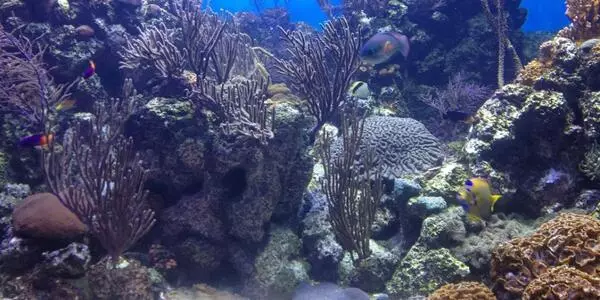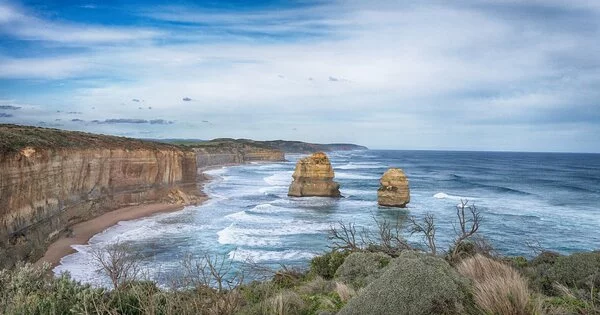Marine fossils can shed light on past ecosystems and environmental conditions. Scientists frequently use them to reconstruct ancient marine ecosystems and understand changes that have occurred over time. While marine fossils can provide valuable information about the past, it is important to remember that they are only one piece of the puzzle when assessing the health and stability of ecosystems.
Humans began altering environments long before records of the creatures that lived in them were kept, making it difficult for scientists to determine what healthy ecosystems should look like. Researchers show that the recent fossil record preserves a reliable snapshot of marine environments as they existed before humans.
Biologists attempting to conserve and restore deforested environments are constrained by their lack of knowledge of what those environments looked like before humans arrived. This is especially true of coastal ecosystems, many of which had been significantly altered by pollution and over-harvesting hundreds of years before scientists began monitoring them.
A faithful analogue of modern marine ecosystems exists just beneath the surface, according to a new study published in the journal PeerJ. The findings, which are based on more than 20 years of conservation paleobiology, suggest that fossils of various marine groups, such as worms, mollusks, crabs, and sea urchins, are preserved in proportion to their diversity.
We designed our study to see if those biases hold true across a wide range of organisms, not just mollusks. What happens when worms, sea urchins, and all the other groups in a marine ecosystem coexist?
Carrie Tyler
“This has been a topic in paleontology for decades,” said study co-author Michal Kowalewski, the Florida Museum Thompson chair of invertebrate paleontology. “People have looked at modern ecosystems in a variety of habitats to see how well the fossil record reflects what’s living there. But most previous studies looked at how species are recorded within a specific group. We wanted to know how groups are recorded within the entire system.”
Fossils are an incomplete and imprecise record of Earth’s past. Soft-tissue organisms are less likely to be preserved than those with hard, durable, decay-resistant parts, such as bones and shells. Hard parts vary in thickness and strength depending on the organism from which they came and their stage of development. These differences influence the likelihood that they will be preserved.
To get around this problem, researchers used mollusks as a proxy for ecosystem health. Mollusks are especially well-represented in the fossil record, and previous research has shown that they are reliable predictors of past diversity. Using fossils and historical records, European researchers recently demonstrated that the eastern Mediterranean Sea’s native molluscan biodiversity has almost entirely collapsed due to global warming. This discovery suggests that other marine groups in the region are approaching similar thresholds.

Scientists can use fossil mollusks to infer the health and stability of an environment in the same way that a doctor takes a patient’s vital signs. However, a thorough examination is required to distinguish patterns within population declines, shifting ranges, and the introduction of invasive species.
“Most of what we know about biases in the fossil record is based on mollusks,” said Carrie Tyler, an assistant professor at the University of Nevada, Las Vegas, who led the study. “We designed our study to see if those biases hold true across a wide range of organisms, not just mollusks. What happens when worms, sea urchins, and all the other groups in a marine ecosystem coexist?”
Before reaching that conclusion, Tyler and Kowalewski first had to find a suitable marine ecosystem in which to compare living and fossil organisms and study the discrepancies between past and present communities.
The authors settled on a comparatively unaltered environment off the coast of North Carolina that contained both living animals and dead skeletal remains. There, they collected samples from 52 localities along transects that extended from near-shore coastal waters out to sea.
“We chose this system because it included a spectrum of habitats along an onshore-offshore gradient, from estuary to open shelf,” said Kowalewski. Tyler and Kowalewski were able to test the preservation potential for a variety of organisms and environmental conditions because each habitat supports specialised communities.
They counted over 60,000 living and dead specimens representing hundreds of marine invertebrates over the course of two years. Mollusks’ thick shells, as expected, resulted in an overabundance of their remains in the fossil record when compared to other groups. However, fragments of dead corals, sand dollars, tube-forming worms, and other non-mollusks were found in similar abundance and diversity to their living counterparts.
Groups with scant existing diversity in the region, such as sea stars and brachiopods, were not recovered from the fossil record due, in part, to their low numbers. In many cases, different species dominated past and present habitats; for example, a type of hermit crab common today did not appear in the fossil record. However, the overall number of species in each group remained stable.
Most marine ecosystems lack anything near a complete inventory of the species that inhabit them, and the existing roster is dwindling as some species decline in abundance and others succumb to extinction. But if other marine ecosystems are archived with the same fidelity as those in North Carolina, researchers will have a new baseline with which to evaluate the longterm viability of the communities they support.





